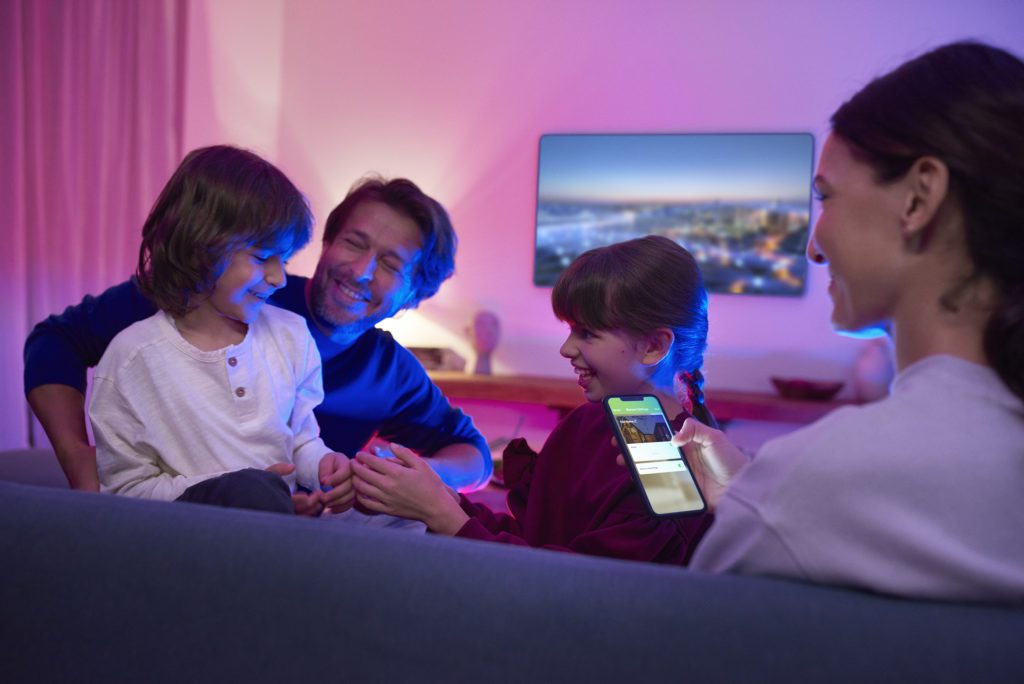It’s struck me that in the past, the notion of the “smart home” is one that is brimming with the latest technology, perhaps in a way that fulfils the desire of the consumer hungry gadget lover over that of the regular dweller, whose life becomes overcomplicated with anxiety-enhancing digital switches. But, as technology becomes more intuitive and innately imbedded into our lives and homes, the objective is now about enhancing the quality of life of both people and planet. So, the benefits are that much more tangible to both our clients and the services that we offer as designers. In fact, the future smart home will help owners to:
- Control energy use more readily – reducing impact on the environment and bills.
- Enhance comfort levels for occupants by controlling their environments.
- Customise their spaces for times of the day, activity, and moods.
- Adapt to future technology and features to future proof their homes.

So, what does all this mean in a little more detail and how can we simply achieve a smart home that’s fit for the future?
- Take control
Smart homes not only enable us to choose our own environments, but they also help us to understand and make choices about our impact on the wider environment: we can see how much energy we are using, we can reduce waste by switching things off when we don’t need them, set them to use energy when it is cheapest, or to respond to the climate and season. Schneider Electric’s multipurpose Wiser Smart Home solution gives you that control from your fingertips through the technology within your smart phone, voice assistant or smart switches (FLS). For example, scheduling the underfloor heating system to stop warming rooms when they are not used or they have reached the desired temperature; or setting your electrical vehicle to charge over night when electricity use and costs are lower. And, if we forget to turn anything off before we leave the house, we can do so from our smart phone apps. This both allows us to control our resource use and reduce the anxiety of accidentally leaving anything switched on.
- Enhance Comfort
Having influence over the environmental quality of a space has long been seen in the office as a key determinant of workplace satisfaction. Much of the same is true at home, where we all have different needs and sensory requirements, be that for lighting, temperature, or sound. Being able to understand levels and adapt them to personal or family needs creates a home that will fit you like a glove. That control could be boosting temperatures during a cold snap, or improving air quality by monitoring CO2 levels, particulates and VOCS, and controlling air purifiers to filter toxins away. Understanding data from the environment around you allows you to control and set comfort levels more readily.
- Customisation
One of the creative aspects I love about Smart Homes is how they give people the ability to personalise their homes and better support the people in it. This could be as simple as choosing room-by-room specific sensory finishes, or the ability to create room ‘scenes’. These configurations of settings can be used to create different types of ambiance within the same spaces, making each room adaptable and versatile and responsive to the household’s changing needs.
Our homes need to be more versatile now than ever before as we work, rest and play in the same spaces. Each room may support a whole range of activities throughout the day and into the night. For example, good adaptable lighting is essential in the kitchen where the household may be preparing food, eating, working, and socialising. Plus, the pre-configured scenes can be programmed in advance so it can be set to ‘cooking with friends’ mode or ‘working from home’ mode to ensure the space really supports the activities at a touch of a screen (or through voice activation paired with Amazon’s Alexa, Google Assist or Siri).
Similarly, the living room can be set to accommodate daytime activities, with brighter lighting and shutters fully open to allow for maximum natural light, as well as operable windows or ventilation for a good supply of fresh air. However, come evening time, the heating can be turned up, the lights can be dimmed, and the shutters fully closed for atmospheric entertaining or a home cinema experience.
- Future proofing
Technology is always evolving and predicting what the home of the future will actually contain remains elusively out of reach. So, adaptability increases resilience and opens up opportunity.
The Wiser Smart Home system will help you to do just that, with a scalable and upgradable system that connects your home control systems and gives you maximum control.
Wireless smart elements can be added retrospectively and incrementally as the need arises rather than wired into the home. This means the technology is no longer out of reach for many and each household can choose what they want to prioritise. What’s more the ability to control our environments using mobile phone apps means that it’s not a daunting prospect to learn how to use a whole new interface – we are already so familiar with the controller as we use our phones for so many things in our lives.
The smart home of the future is, surprisingly, already here, allowing you to take control of your energy use, and create the spaces that support your life, to enhance family comfort and wellbeing. And far from being scary and complicated, its’ interfaces are those that we are already familiar with. As the world around us changes, so must our homes, to adapt and enhance the quality of our lives and the planet that we live on.
Discover more tips and Interior Design inspiration in our web pages



